Palm Oil production-” a brief overview, the connection to climate change and how to take action”
Climate Change – Over 50 percent of packaged food products in supermarkets are containing palm oil. Hereby the impact of palm oil agriculture on climate change is tremendous and most people do not even know why. Click on the Article: Palm Oil production-” a brief overview, the connection to climate change and how to take action” to continue reading.
This article provides an overview on the oil palm plant itself, why the current production of palm oil, especially in Indonesia is so harmful to the environment followed by the effect on global warming. However, there is a solution to stop the status quo and change it to a more sustainable palm oil agriculture.
Palm Oil Burning Rainforest – Making space for new plantations (photo by Greenpeace)
Basic Palm oil Knowledge first
Palm oil is a globally traded agricultural commodity retrieved from the oil palm plant. The oil palm is a primordial African tree in the palm family Arecaceae, cultivated as a source of oil. The oil palm is grown extensively in its native West as well as Indonesia and Malaysia. Palm oil obtained from the fruits is used for the production process of soaps, candles, cosmetics, and biofuels. Palm kernel oil on the other side is used in the manufacturing process of such edible products as ice cream, chocolate, margarine, cookies, and bread, as well as many pharmaceuticals.
After the oil is extracted, the kernel leftovers are used as a source of animal food, primarily for cattle. According to the editors of Britannica, “the oil palm bears a single stem and reaches about 20 meters (66 feet) in height and has many tiny flowers crowded on short branches that develop into a large cluster of oval fruits some 4 cm (1.6 inches) long” .
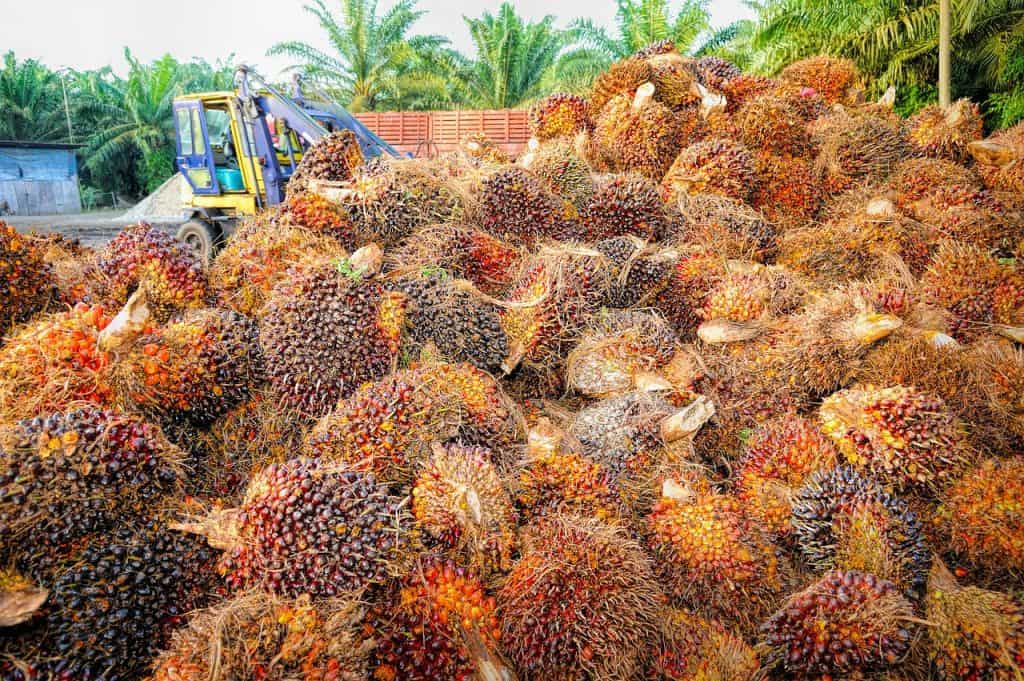
What happens with the ripe fruit ?
Once the fruit is ripe, it can be delineated as black coloured with a red base which features a single oily seed known as the kernel. For the common oil production, the outer fleshy fraction of the fruit is stewed before it gets pressed in order to dismantle the so-called lipolytic enzymes. Those are defined as water-insoluble substances which ones are also to find in dairy products. After pressing, the palm oil it is extremely colorful because of the existence of carotenes which is a widely distributed orange color pigment in plants.
Economical facts
In the last decade, the import of palm oil to developed countries like the U.S, Germany, and Japan increased up to 500 %. A reason for this is the competitive price and wide availability of this product. The problem is only a few big companies are operating high profits from palm oil production whereas millions of people suffer from the production. According to the Worldagrarforestry, oil palm plantations are attractive to investors as well, the potential profitability of the 23 biggest plantations in Indonesia is between 4000 to 23000 US. Dollar per hectare.
Malaysia for example accounts for the worlds second biggest Palm oil producer & exporter with an area of 5.74 M ha.

Endless raws of palm oil plantations on Malaysian Borneo, 2018. Photo taken by Moritz (Truefoodsblog)
Why is Palm oil agriculture so harmful?
In order to meet the world’s increasing demand for palm oil, huge areas of rainforest, especially in Indonesia and Malaysia, continue to be destroyed often using slash and burn techniques in order to create space for palm oil plantations. Thus richly diverse ecosystems are replaced by endless rows of oil palm. Indonesia is considered as the world’s biggest palm oil producer. With an enormous increase in planting of palm oil, the country is also losing its forest at an alarming rate. Like oceans, rainforests absorb carbon dioxide from our atmosphere.
For decades and decades, the forest is breathing in the carbon, storing it in the woods trunks, leaves, and other organic matter. Those carbon emissions are being held safe from humans until large palm oil companies clear them up and light them on fire. That procedure acts like a so-called “carbon bomb” which releases massive carbon emissions back to the atmosphere .
The Indonesian Rainforest
As one of the last three big rainforests, also called the lung of mother Earth, the Indonesian rainforest is going to disappear completely if no action is taken to stop deforestation. The expansion of the palm oil industry in Indonesia takes over about 80 % of their forests which is not only the living environment of the dwellers but also the biosphere of forest species such as elephants, monkeys, and tigers to name but a few . Large companies bribe government officials to issue a permit for them to start burning the land, nothing new in Indonesia, one of the world’s most corrupted countries. These forest fires are releasing a copious amount of carbon dioxide. In the year 2015, forest fires in Indonesia caused more carbon emission daily than the entire U.S economy.
The ecological footprint – Water consumption
Water scarcity is a serious issue facing our mother earth along with climate change. This part focuses on the impacts associated with the use of water by the palm oil industry for the production of the commodity.
Oil palm is one of the agricultural crops that needs an adequate supply of water to produce quality yields. As a major agricultural commodity in Malaysia, the oil palm industry needs a consistent water supply to ensure that it is able to meet the ever-growing global demand for vegetable oils and fats.In Vijaya Subramaniam’s 2018 paper titled ‘Charting the water footprint for Malaysian crude palm oil’, impacts related to the use of water by oil palm trees, as well as uncertainties based on different pathways and allocation types were analysed.
Key findings:
- significant impacts were found to have originated from oil palm’s indirect water use, which included the production and use of energy, fertilisers, pesticides and POME treatment.
- oil palm’s direct water use was found to be minimal, as plantations in Malaysia receive adequate rainfall, and are located in regions with an abundance of water. Oil palm is also not irrigated, as opposed to other oilseed crops such as soybean and rapeseed.
- oil palm’s water footprint identified its main potential impacts, namely, land conversion, production and use of fertilisers and pesticides.
These findings show that the ecological footprint regarding fresh water use are not coming from the agricultural part of growing the crop. The unsustainable fresh water use starts further down the supply chain. The processing of the kernels to Oil so the milling stage, the use of fertilizers & pesticides during plantation. Surprisingly, the pathway with a biogas capture installed mill has a much lower Water footprint (WF) value compared to one without a biogas capture installation.
Palm oil plantations are advised to adopt Good Agricultural Practices, compromising land management, water management, fertilizer and integrated pest management. All this to ensure that they are able to achieve a balance of good yields with reduced environmental impacts. If the regulations set by the Malaysian and Indonesian Governments are high & effective enough lies in the eye of the beholder. One is for sure, controlled standards set for more accountability and sustainability in its utilization of a “natural” resource have to be implemented more strict. This is often overlooked in these Asian countries (Malaysia, Borneo, Indonesia).
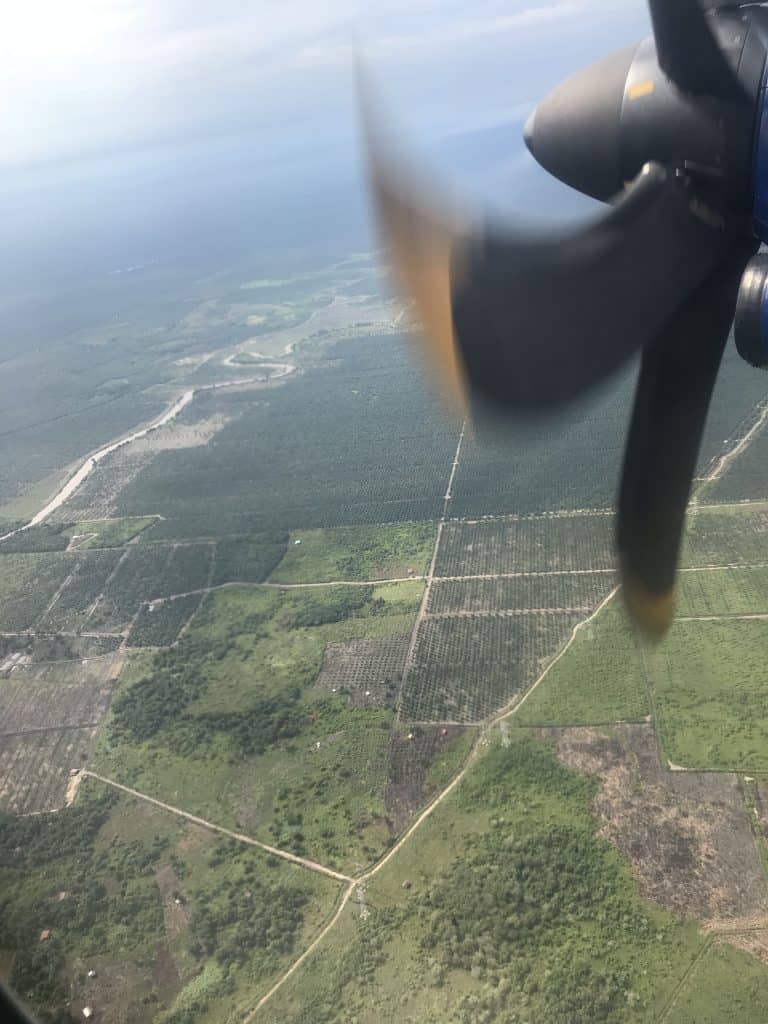
Rainforests (The lung of mother earth) are cleared up. Burned down in order to produce more Oil Palm plantations faster. Photo taken by Moritz on Malaysian Borneo, 2018 (by Truefoodsblog.com)
How to take action?
Because the palm oil is already in so many products it is almost impossible to put an end on palm oil agriculture, our society has become dependent on this natural resource. However, there is a solution that aims to produce palm oil without causing deforestation or harming human being and animals, the so-called sustainable palm oil production. Organizations like the Round Table for Sustainable Palm Oil are working together with more than 500 major palm oil producers already in order to make palm oil agriculture more sustainable. The RSPO issues a certificate to all palm oil companies which fulfill their criteria.
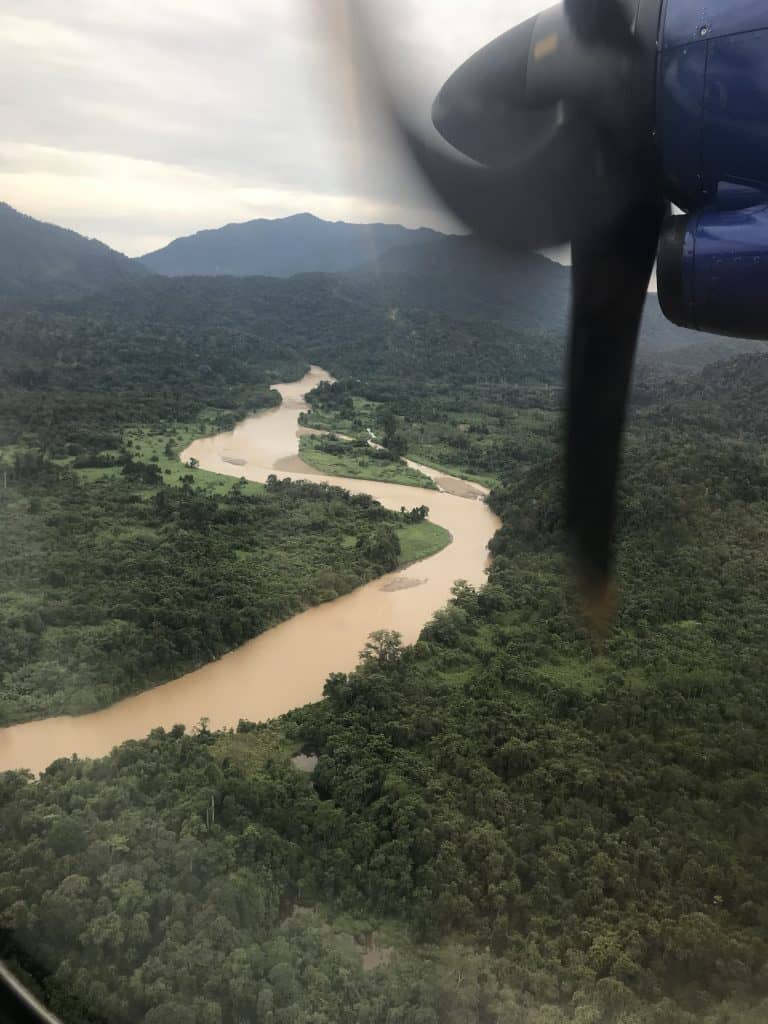
Protected Rainforest Area in the Middle of Borneo (Indonesia-Malaysia), No Oil Palm Plantations are allowed here. Photo taken by Moritz, 2018 (by Truefoodsblog)
4 points of the criteria are :
- Fair working conditions and wages for the local employees, 2. The proof that local people lands and rights are protected, and 3 & 4. No clearing of the primary forest so that areas rich in biodiversity and endangered species are under strict protection, these are the restrictions which have to strictly adhere.
Qualified independent certifiers inspect each plantation on a regular basis, to make sure that the participating organizations meet these standards. Once a company has implemented those regulations the permission to label their products as “sustainable palm oil” and the appearance at the round table of the RSPO is granted.
Dosan Village (a Rolemodel in sustainable industry)
An example that sustainable palm oil farming is possible on a larger scale can be seen in Dosan Village, Riau Sumatra an area with over 730 hectares of palm oil plantations. Poverty and unemployment have been completely eradicated there since 2008, the year in which palm oil production switched completely to sustainable palm oil production according to the rules of the RSPO. In Dosan the use of polluting herbicides has been eliminated in favour of manual weeding which affects at the same time the maintenance of the peatland water levels. The farmers of Dosan do not only increase their plantations productivity but also make sure that carbon emissions causing climate change remain stored in the soil, no land gets destroyed by fire. Over ten percent of the palm oil production is already accredited from sustainable agriculture what includes over a million hectares of land in use for this ecologic friendly way of palm oil farming.

There is hope, and Palm Oil agriculture can be more sustainable in the future. Consumers decide with their daily choices in the supermarket. Photo taken at the Beach of Sabah, Borneo (2018 by Truefoodsblog)
My Conclusion
The reason why large companies are chopping down the forest in order to plant oil palm is because consumers keep buying products which include unsustainable palm oil. Hereby the conclusion is as soon as people start to realize that the decisions they make in their daily lives while grocery shopping affects how our ecosystem is treated, there is a chance to shift from deforestation and ecological degradation to sustainable and eco-friendly use of palm oil. If the demand for palm oil including products decreases. If consumers starting to demand for products cointaining certified sustainable produced palm oil. Providers will switch to this certified way of producing palm oil (which brings less environmental damage, the creation of employment and infrastructure with it). So that farmers can live from their production but also to help the worlds’ eco-system to rehabilitate itself step by step.
Disclaimer: This Article focuses on the Palm oil production for human consumption. The use of Palm Oil in Bio Gas and as fuel is another topic which has to be researched well in order to draw conclusions about the environmental impact.
List of references:
Figure 1
Fruit of the oil palm (Elaeis guineensis).145605-004-6D842341.jpg (JPEG-Grafik, 550 × 368 Pixel) – Skaliert (0%). (n.d.). Retrieved from https://media1.britannica.com/eb-media/05/145605-004-6D842341.jpg
Figure 2
https://pixabay.com/en/palm-oil-fruit-background-ripe-1464654/
carotene | chemical compound | Britannica.com. (n.d.). Retrieved January 9, 2017, from https://www.britannica.com/science/carotene
Charting the water footprint for Malaysian crude palm oil, Retrieved from: https://www.sciencedirect.com/science/article/pii/S0959652618300696
Deeth, H. C., & Fitz-Gerald, C. H. (2006). Lipolytic Enzymes and Hydrolytic Rancidity. In P. F. Fox & P. L. H. McSweeney (Eds.), Advanced Dairy Chemistry Volume 2 Lipids (pp. 481–556). Springer US. https://doi.org/10.1007/0-387-28813-9_15
oil palm | tree | Britannica.com. (n.d.). Retrieved January 9, 2017, from https://www.britannica.com/plant/oil-palm
TB12054.PDF. (n.d.). Retrieved from http://www.worldagroforestry.org/downloads/Publications/PDFS/TB12054.PDF
Which Everyday Products Contain Palm Oil? | Pages | WWF. (n.d.). Retrieved January 9, 2017, from http://www.worldwildlife.org/pages/which-everyday-products-contain-palm-oil
145605-004-6D842341.jpg (JPEG-Grafik, 550 × 368 Pixel) – Skaliert (0%). (n.d.). Retrieved from https://media1.britannica.com/eb-media/05/145605-004-6D842341.jpg
carotene | chemical compound | Britannica.com. (n.d.). Retrieved January 9, 2017, from https://www.britannica.com/science/carotene
Deeth, H. C., & Fitz-Gerald, C. H. (2006). Lipolytic Enzymes and Hydrolytic Rancidity. In P. F. Fox & P. L. H. McSweeney (Eds.), Advanced Dairy Chemistry Volume 2 Lipids (pp. 481–556). Springer US. https://doi.org/10.1007/0-387-28813-9_15
oil palm | tree | Britannica.com. (n.d.). Retrieved January 9, 2017, from https://www.britannica.com/plant/oil-palm
Economic assessment of palm oil production (2012/13). Retrieved January 9,2017 from http://www.worldagroforestry.org/downloads/Publications/PDFS/TB12054.PDF
Which Everyday Products Contain Palm Oil? | Pages | WWF. (n.d.). Retrieved January 9, 2017, from http://www.worldwildlife.org/pages/which-everyday-products-contain-palm-oil

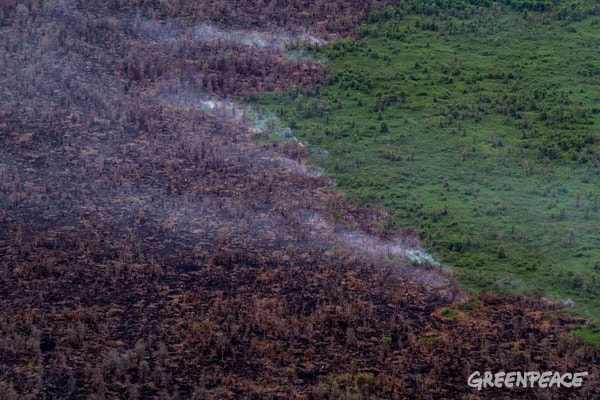






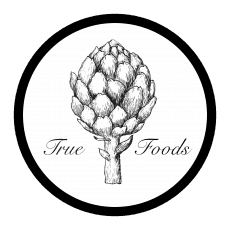
Hi, I like your post really I have read first-time Thanks for sharing keep up the good work.
Thank you! This topic is really close to our hearts, so thank you for your share